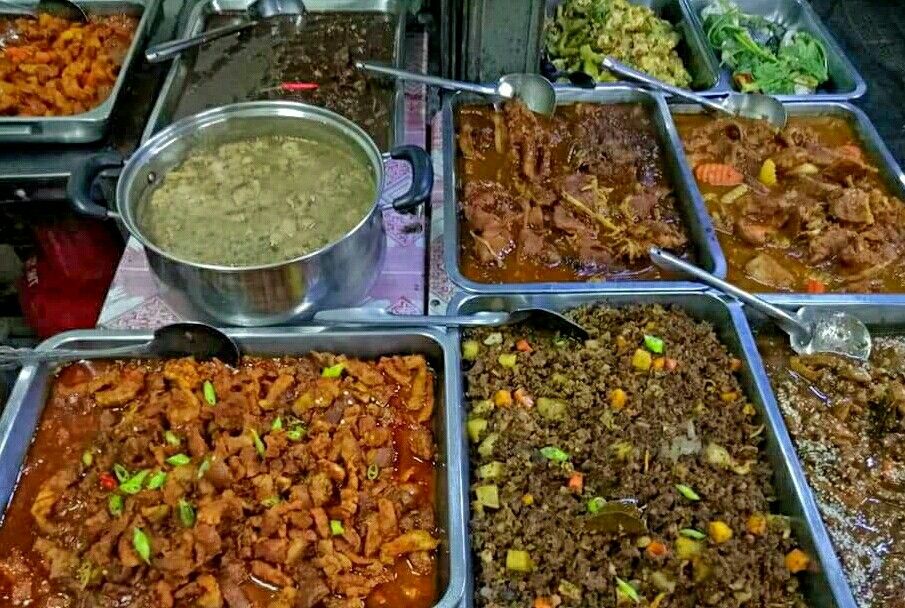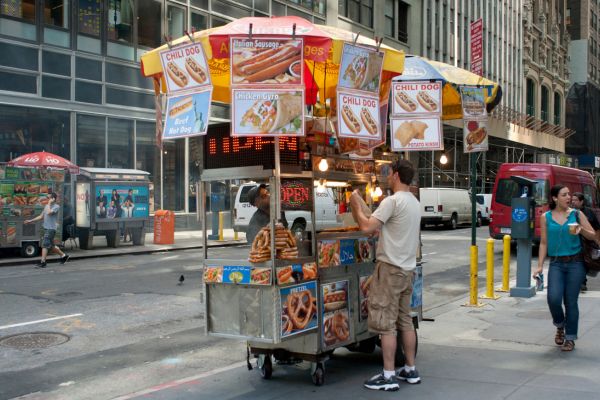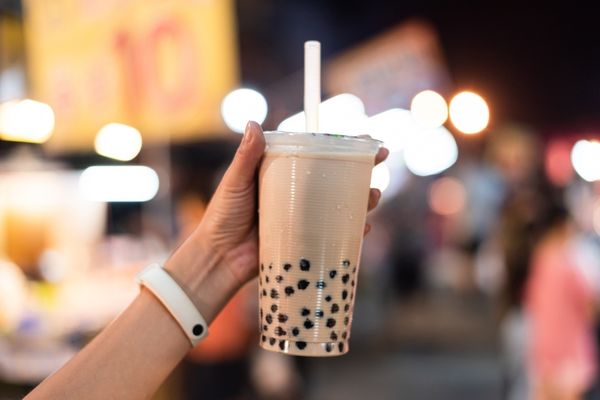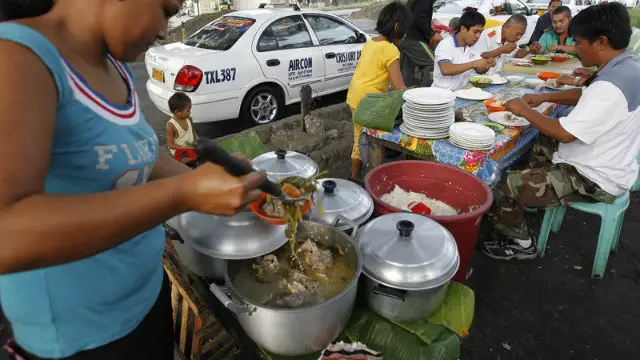Customers have developed the habit of visiting their favorite carinderia business for various reasons. They might not have enough time to cook at home. They lack cooking skills. They prefer not to spend time going through the wet market to buy ingredients. Thus, they often depend on the carinderia menu at your eatery for meals.
The customers might not have complete cooking equipment. Or they ran out of LPG fuel. The list goes on and on. But the bottom line is that they simply could resist and break the habit of spending lunch with quick decision-making on what to eat, where to sit, and how much to pay habit when visiting the beloved eatery.

It’s like saying a carinderia experience is part of a day in life of Filipinos, especially before the pandemic when everyone’s movement was unfettered.
Table of Contents
Why do customers actually prefer to eat at carinderias?
Filipino carinderia customers have developed the habit of visiting their favorite carinderia business for various reasons.
- They might not have enough time to cook at home. They lack cooking skills.
- They prefer not to spend time going through the wet market to buy ingredients.
- They might not have complete cooking equipment.
- Or, customers ran out of LPG fuel to cook meals or lack a key ingredient.
The list goes on and on. But the bottom line is that they could resist and break the habit of spending lunch with quick decision-making on what to eat, where to sit, and how much to pay when visiting the beloved eatery.
It’s like saying a carinderia experience is part of a day in the life of Filipinos, especially before the pandemic when everyone’s movement was unfettered.
Why do customers prefer to eat at carinderias?
The taste is good!
This observation is obvious, and nobody would argue we are loyal to certain food joints because we love the food taste, trust the preparation, and know the carinderia has a reputation for good hygiene and health protocols. “Sabaw pa lang ulam na” might be one phrase that clearly describes a customer’s appreciation of food.
The food is cheap!
“Nairaos ang petsa de peligro” is a statement that a customer managed to stretch the budget at certain days of the month when the budget is critically low, yet they work to get by. Going to a fancy restaurant might be a treat to self and family during payday. But the ever-reliable carinderia is always a refuge to a cash-strapped worker or someone saving up for the future. A cup of rice, a soup dish, and a glass of water already fill a hungry tummy. But the combo doesn’t hurt the pocket as much as a trip to a fancy restaurant does.
Which dishes and beverages do customers pick at a carinderia?
There are no scientific study or survey results we can gather but given our personal experience, there are factors that influence the choice of food.
- The weather
There’s that comfort food that matches the mood. And that mood is sometimes dictated by the weather. When it’s hot and sunny or cold and rainy, some dishes suit our palates more than the others. Who wouldn’t love to share that nilagang baka or manok na tinola order on a rainy evening? - The season
The season may refer to the time of the year or the cycle every month. How we pick our dishes at a carinderia menu may not be based on what we want but what’s available. For example, during Holy Week, carinderias usually serve fish dishes and suspend meat options if they are open for business. During payday, we can invite the whole gang to a festive dinner and order everyone’s favorites. - The location
Carinderias serve dishes based on where they are located and are known for. Pampanga’s carinderias may serve more sisig, Cebu has lechon, and Ilocos has bagnet specialties to cater to visiting tourists. Those close to the sea may have more fresh seafood bounty to offer. If unlimited rice is on offer, expect that to factor in too!
Carinderias have their go-to menu items that customers from all over the Philippines choose and be served on the table.
The best carinderia menu you should serve your hungry customers.
1. Fried chicken
A fried chicken order is a safe bet, especially with young kids who prefer dry, veggie-less dishes. Adults love a juicy Filipino-style fried chicken and don’t forget to have your dips ready. A dip usually consisting of soy sauce, calamansi, vinegar, and bird-eye chili adds flavor and makes the dish more savory for a satisfying meal.
2. Pancit bihon
There are many varieties of noodles available at carinderias. But one of the more popular ones is pancit bihon, consisting of thin rice noodles with an assortment of vegetables such as carrot, cabbage, bell pepper. Served hot, it goes well seasoned with calamansi juice.
3. Pork or chicken barbecue
Carinderias often attract customers from afar because barbecue-flavored air wafts around in the block. No wonder it’s a go-to order for those who just arrived and don’t even bother to check other dishes on the menu. Usually, marinated meats are grilled in front of the carinderia, and customers can choose which piece they want: pecho, paa, pork belly, or whatever other meat parts are available.
4. Pork menudo
The traditional Filipino menudo dish usually found at carinderias consists of a pork (beef or chicken) stew that includes cuts of pork, liver, onion, garlic, carrots, tomatoes, potatoes, green peas, hotdog slices, and chili peppers. Great treat of meat and veggies for lunch or dinner.
5. Tinolang manok
Tinolang manok is a traditional Filipino soup available to carinderia customers. It is likely one of carinderia owners’ go-to Filipino soup recipes to make every day because of the availability of its ingredients and the ease of its cooking process. Also, customers sometimes ask for soup, and serving sabaw ng tinola is an excellent enticer to get a customer’s loyalty after a deeply satisfying meal.
6. Bistek Tagalog
Modified beef steak is the clue to the name of this traditional recipe. It is made of soy sauce, lemon juice, marinated beef steak and garnished with onion rings. Though it’s not a standard fare usually served at any given carinderia in the neighborhood, it can be one of the quickly sold-out items, cleaning up its containers ahead of other food in the menu.
7. Pinakbet
Pinakbet or pakbet originated from Ilocos region but is widely adopted across the entire Philippines. It’s a stew of vegetables (string beans, eggplant, squash, okra, and bitter melon) with shrimp paste and meat usually from pork or chicken. It can be a great side dish for a meat-heavy main course and is a Filipino favorite due to its texture. It is also one of the Filipino vegetable dishes commonly served in carinderia menu all over the Philippines.
A pinakbet dish basically a meat vegetable stew with shrimp paste that many Filipinos love to eat as a side dish or the main course because of its distinct salty flavor. A mixture of various veggies (tender and earthy sweet taste of pumpkin/squash, crunchiness of the green beans, and the bitter taste of the bitter melon, for example) creates a distinction over other typical Filipino dishes.
8. Ginataan
Many dishes go well with coconut milk. Ginataang munggo, ginataang kalabasa with shrimp, ginataang langka or laing are some examples of dishes cooked in coconut milk. For carinderias, a variation of ginataang gulay is served in carinderia menu with different vegetables as the dish’s main ingredient complemented with other ingredients.
9. Dinuguan
Filipinos may be hesitant to introduce this exotic dish to foreign friends due to its color and source (it’s a bloody stew, mind you). But Filipinos are fond of this dish, which epitomizes the salty characteristic of Filipino dishes usually found in carinderias. Consisting of pig’s blood and pork liver, dinuguan also includes various ingredients like onion, chili, and vinegar that enhance a delicious dish that goes well with a generous serving of rice.
If you are a carinderia operator, make it a point to include the above dishes in your standard fare of the Filipino menu. Don’t forget to have an abundant supply of boiled rice, a Filipino staple food, even if unlimited rice isn’t on the menu. Filipino customers and foreign friends would be grateful for the excellent dining experience you’ll provide!
Read more:
- How to Operate a Carinderia Business
- 5 Typical Challenges Carinderia Businesses Face
- Refrigerator Buying Guide for Filipino Businesses
- 7 Food Businesses to Start in the Philippines
- Penong’s Barbecue Chicken Franchising
Help Pinoy Negosyo
If you find this article helpful, consider donating to Pinoy Negosyo to help maintain content and server expenses. Thank you!








